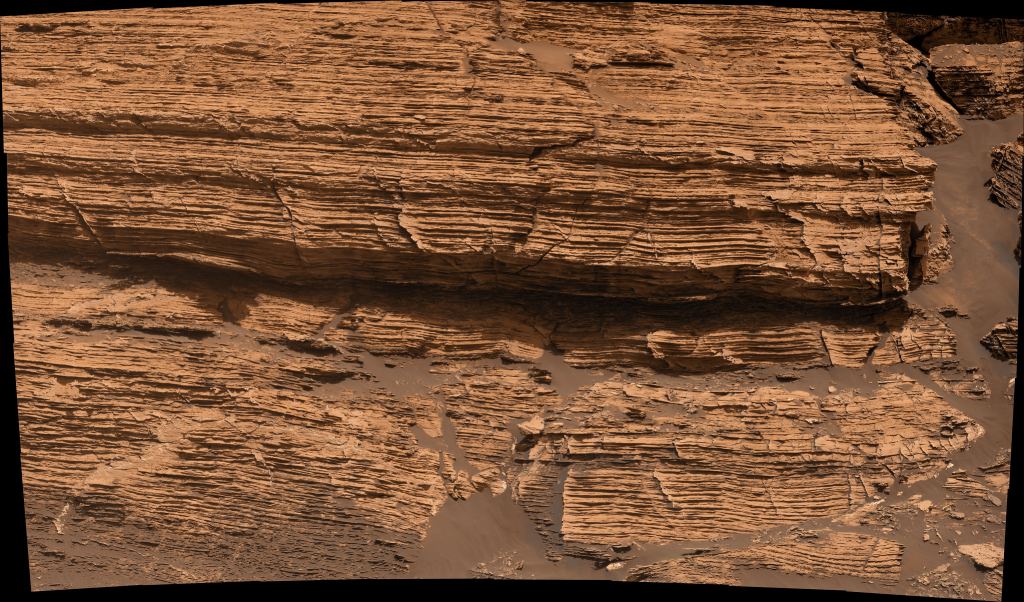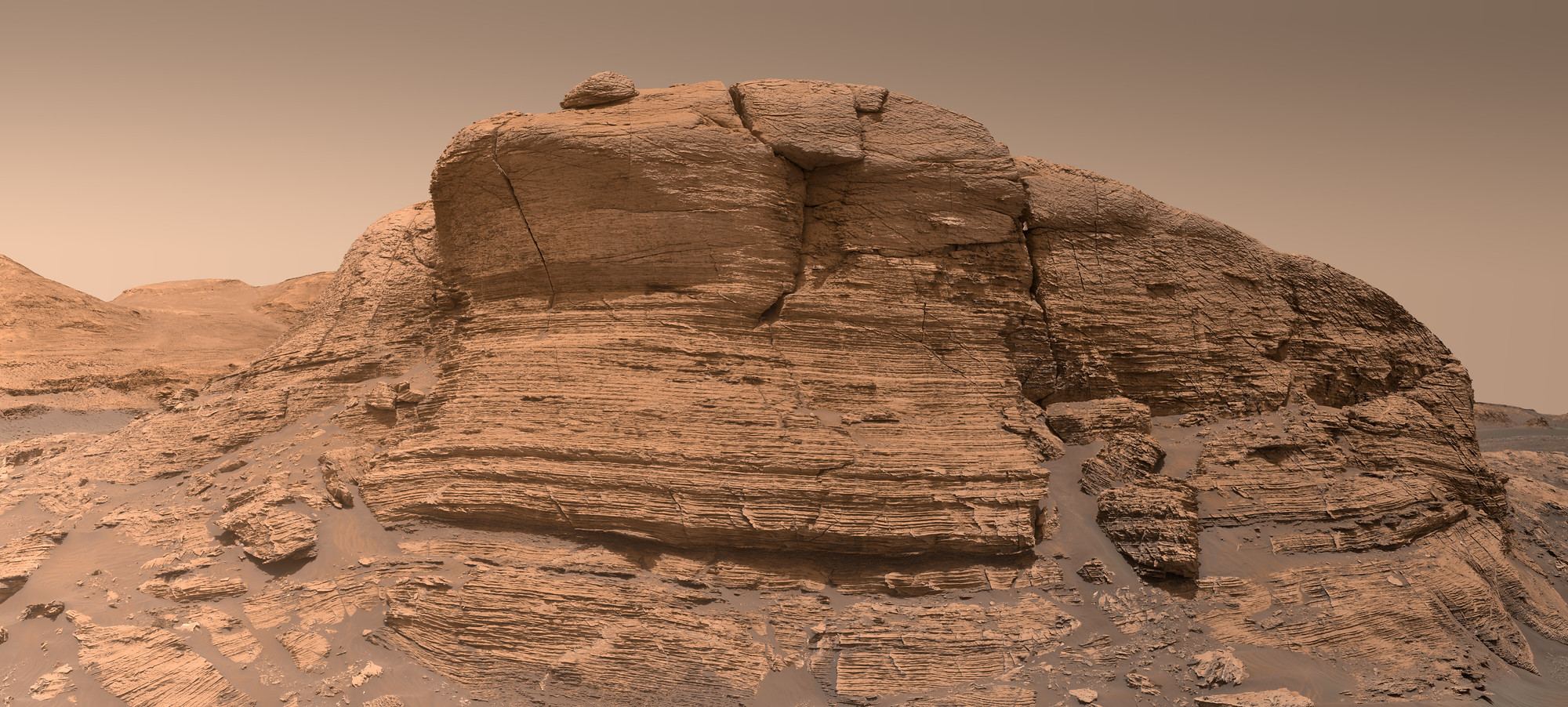Here are a few stunning views of the Curiosity Rover’s current location, Mont Mercou in Gale Crater on Mars. This towering outcrop provides a great look at layered sedimentary rock structures. On Earth, it’s common to find layered rock like the ones within this cliff face, especially where there were once lakes. The pancake-like layers of sediment are compressed and cemented to form a rock record of the planet’s history.
This color image is from one of our favorite image editors, Kevin Gill. He assembled 202 raw images taken by MSL’s MastCam between sols 3057 and 3061. You can see Kevin’s full mosaic on Flickr.
Gale Crater was specifically chosen as the destination for the Curiosity rover from approximately original 60 candidate sites, because data from orbiting spacecraft determined that Mount Sharp – the big mountain in the middle of the crater – is created from dozens of layers of sedimentary rock, perhaps built over millions of years. These layers are telling the story of Mars’ geological and climate history, and planetary geologists are having a field day with Mont Mercou.
And the cadre of image editing enthusiasts around the world have been taking advantage of this amazing rock formation, too. We have just a few examples here. Here’s a stunning video created by Mattias Malmer, which gives you a virtual stroll around Mont Mercou. Malmer built the video from images taken by Curiosity on sol 3049.
Clouds have been showing up in recent Curiosity rover images, too and Sean Doran put it all together in this great shot:
And Stuart Atkinson processed this jaw-dropping view:
What’s the larger view of this area, you ask? Elisabetta Bonora has it covered:
And here’s a close-up view of some of those layers, processed again by Kevin Gill.

“Humans minds don’t easily comprehend the vast eons of time that separate us from the places we explore in space with robots like Curiosity,” wrote Scott Guzewich, Atmospheric Scientist at NASA’s Goddard Space Flight Center, and a member of the Mars Curiosity rover science team, in a blog post about the current activities of Curiosity. “When we explore Mars, we’re roving over rocks that formed billions of years ago and many of which have been exposed on the surface for at least tens or hundreds of millions of years. It’s a gap of time that we can understand numerically, but there’s no way to have an innate feel for the incredible ancientness of the planet and Gale Crater.”
We’ll quite likely hear much more about Mont Mercou in the days and weeks ahead, as scientists begin to process the various findings here from Curiosity’s science instruments. You can read all the latest mission updates from Curiosity here to find out which instruments are being employed, and find all the raw images taken by the rover’s various cameras here.

